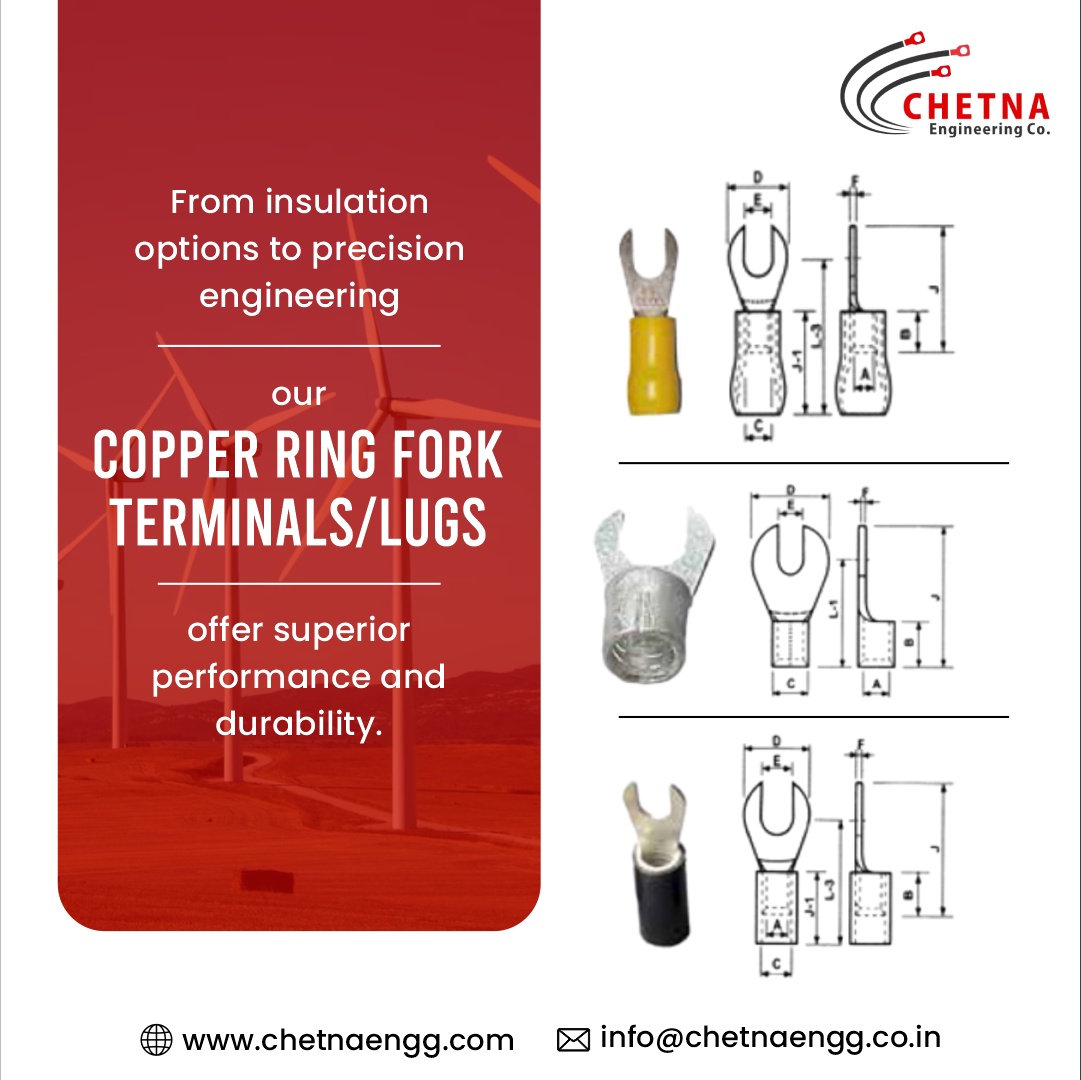As far as electrical connections are concerned, choosing the right type of lugs is an extremely crucial decision. Be it an expert electrician or someone who is curious about the same, having the sense to select the right type of lug can directly and consequently have an impact on the efficiency, durability, and most importantly, safety of your electrical systems. A number of people have an underlying perplexion about choosing ring-type lugs or screw-type lugs, as they both have similar functions. However, their inherent characteristics are different which makes them suitable to cater to distinct purposes. In this blog, we will explore the peculiarities of each type of lug, to determine which is the right fit for your specific purpose.
Let’s Talk About Ring Lugs First –
Secure connections
One of the basic benefits that the utilisation of lugs that are ring-type offers is their capacity to provide secure connections that are also reliable. Because these lugs are shaped like a ring, their circular design makes it possible for a bigger contact area with the terminal, ensuring that the chances of disconnection or even loosening due to thermal expansion or vibrations are minimal to none.
Easy installation
Installation of ring-type lugs is easy and straightforward as compared to other types of lugs. This makes them an ideal choice for people with all levels of electrical skills, be it professionals or beginners. All you need are the right tools and methods and you can efficiently and effectively attach a ring lug to a terminal stud.
Versatility
Rings lugs can be used with a wide number of terminal studs, screws, and bolts, which makes them a perfect choice for a lot of electrical applications. Such lugs have the flexibility to accommodate a diverse range of needs wherever their application may be. Available in a number of materials, aluminium and copper ring lugs are most commonly used.
Now Let’s Talk About Screw-Type Lugs –
Hassle-free attachment
Screw-type lugs offer an ease of attachment that allows the users to swiftly and quickly interject the terminal under the clamp or screw head and fasten it tightly and securely. This sheer convenience makes it perfect for use where persistently recurring adjustments or replacements need to be done.
Compact design
Screw-type lugs have a flat profile, which allows them to fit into small and tight spaces, where ring-type lugs can be an impractical choice. Such space-saving and compact design can be especially advantageous where the electrical panels or enclosures are crowded, and every little space is important.
Affordability
As compared to ring lugs, screw-type lugs are known to be more cost-effective, particularly in large-scale installations where a considerable amount of terminals are needed. Because of their mass production and more importantly, simplicity, they are an economical choice for projects that need to be adhered to by a budget.
How to choose the right type of lug?
It is foremost to consider the requirements for application before deciding between a ring lug and a screw lug – assessing if your connection is going to be a secure and stable one, or if you are going to need to adjust it frequently can help you make the right choice. Other than that, it is also crucial to consider the environmental conditions your electrical connections are going to be exposed to. Furthermore, consider if you have budget constraints or if you are looking for long-term savings by way of enhanced durability and reliability. Lastly, you need to go for lugs that are compatible with your connectors, terminal studs, and wiring methods to ensure that they can be easily integrated into your electrical systems. All these factors can help you understand if you should go for ring-type lugs or screw-type lugs.
Conclusion
To sum it all up, it is important to know that between screw-type and ring-type lugs, there is no off-the-shelf solution. Each type of lug comes with its own set of benefits that are suited for certain applications – the best way to make a choice between the two is to assess your requirements and see whose characteristics better benefit your electrical connections. This will ensure that your decision is informed and you have taken the efficiency, durability, reliability, and safety of your electrical connections into consideration.


No comments yet